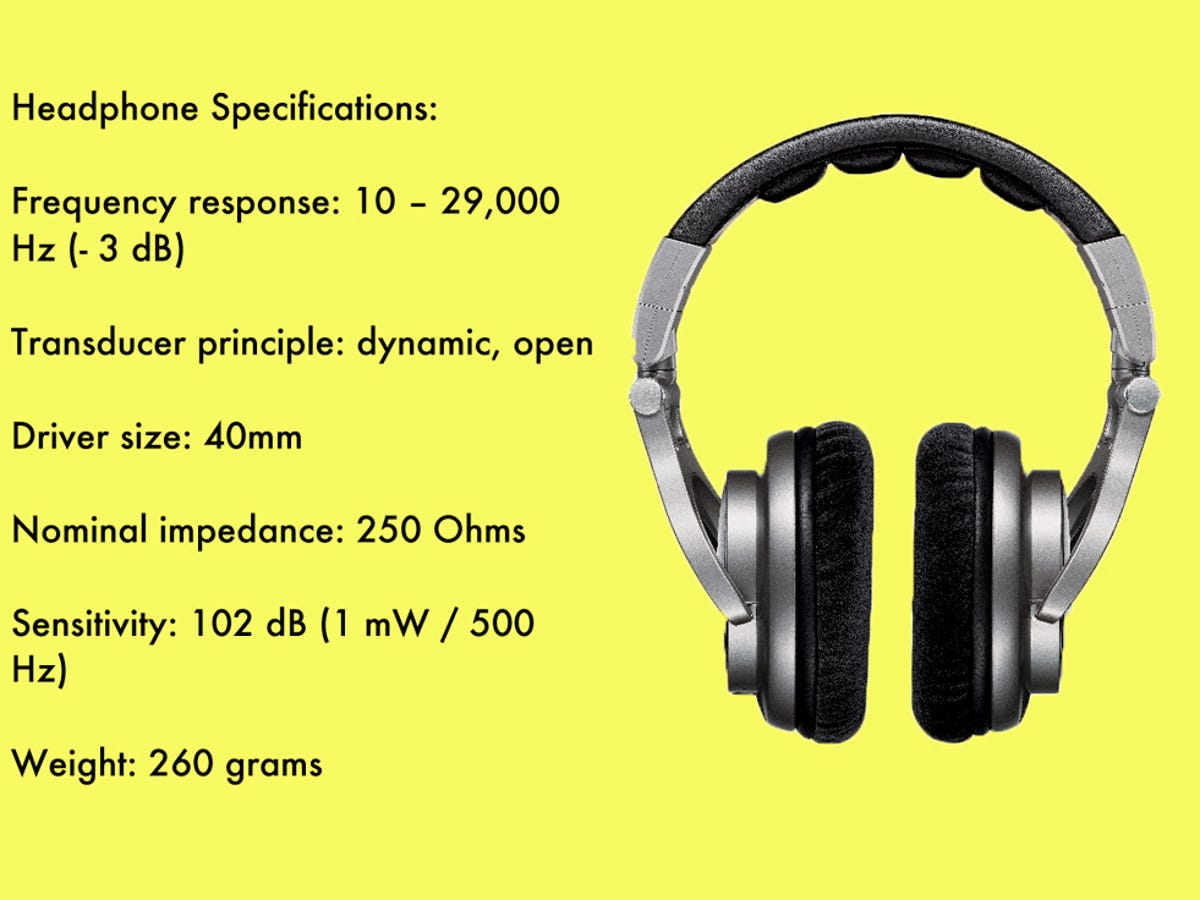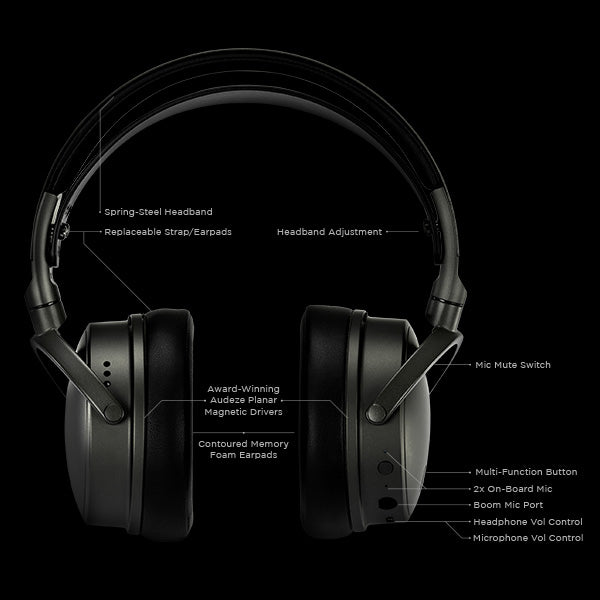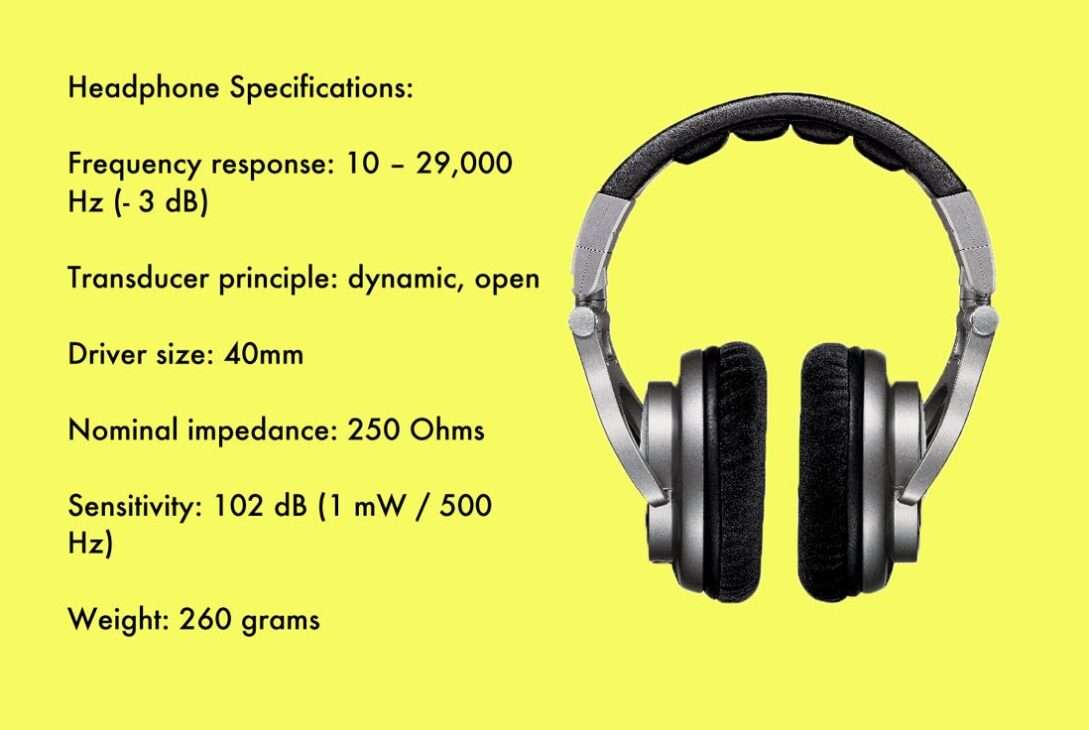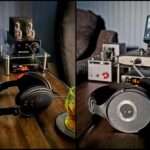Looking for a great pair of headphones that will deliver superior sound quality? Then you need to pay close attention to headphone specifications.
Understanding the technical details of headphones can help you choose the right pair for your needs and ensure that you get the best sound possible. Headphones are an essential accessory for music lovers, gamers, and professionals who use audio and video conferencing systems regularly.
Due to the increase in online education and remote work, there has been a noticeable uptick in headphone usage. However, choosing the right type of headphones is crucial for a quality experience. Headphones vary in price, style, and specifications.
In this guide, we will cover everything you need to know about headphone specifications, from driver size and frequency response to impedance and sensitivity. So, let’s dive in and explore the world of headphone specifications!
Headphone Types
Headphones come in different types. The most common types are on-ear, over-the-ear, and in-ear headphones.
- On-Ear Headphones: On-ear headphones sit on top of your ears and provide a balanced sound experience. They are lightweight and comfortable to wear for extended periods.
- Over-the-Ear Headphones: Over-the-ear headphones surround your ears and provide noise isolation features, which are helpful in high-noise environments. They are ideal for music lovers and gamers who prefer immersive audio experiences.
- In-Ear Headphones: In-ear headphones fit inside your ear canal and provide optimal sound quality and noise isolation. They are perfect for individuals who are always on the go and prefer a portable audio solution.
Importance of Understanding Headphones Specifications
Understanding the headphone specifications is crucial for discerning consumers. It allows you to make informed decisions based on your preferences and usage scenarios.
From impedance and sensitivity to frequency response and driver size, each specification contributes to the overall audio performance of headphones.
By delving into these specifications, you can tailor your headphone choice to match your unique listening needs.
Headphone Connectivity Types
Headphones come in three main types of connectivity: wired, wireless, and true wireless.
- Wired Headphones: Wired headphones are connected with a cable to your device’s audio jack. They are reliable and provide stable audio signals.
- Wireless Headphones: Wireless headphones have no cables, and they connect to your device through Bluetooth. They offer freedom of movement and are ideal for fitness enthusiasts who do not want to be bound by a cable.
- True Wireless Headphones: True wireless headphones are a step ahead of wireless headphones as they do not have any wires between the earbuds. They offer complete freedom of movement and are perfect for running or workout sessions.
Impedance
The impedance is the resistance that headphones offer to the electrical signals from the audio source. Impedance is measured in Ohms (Ω). A higher impedance means that headphones require more power to produce sound.
High-impedance headphones are ideal for professional audio applications like studio recording and music production.

Credit: www.cnet.com
Headphone Frequency Response
The frequency response is the range of sound frequency that headphones can produce. Frequency response is measured in Hertz (Hz) and determines the range of bass, midrange, and treble frequencies that headphones can achieve.
A wider frequency range means that headphones can produce a more balanced and detailed sound.
Driver Size
The driver size determines the sound quality of headphones. In headphones, the driver converts electrical signals into sound waves. Headphones with a larger driver size can produce better sound quality and a wider frequency range.

Credit: www.audeze.com
Sensitivity
The sensitivity is the measure of how efficiently headphones convert electrical signals into sound waves. Sensitivity is measured in decibels per milliwatt (dB/mW). Headphones with higher sensitivity require less power to produce the same sound level as headphones with lower sensitivity.
Noise Isolation
Noise isolation is a feature that blocks external noise from interfering with the audio signal. Headphones have two types of noise isolation: passive and active.
- Passive Noise Isolation: Passive noise isolation is the isolation you get merely from the design of the headphones. In-ear and over-the-ear headphones are excellent examples of passive noise isolation headphones.
- Active Noise Isolation: Active noise isolation uses technology to block outside noise. A microphone inside the headphones picks up outside noise and then creates a noise-canceling signal that blocks the outside noise.
Build Quality
A headphone’s build quality impacts its durability, comfort, and appearance. Premium materials such as aluminum, stainless steel, and genuine leather contribute to both aesthetics and durability.
Ergonomic design features such as padded ear cups and adjustable headbands ensure a comfortable fit for extended listening sessions.
Additionally, attention to detail in construction and craftsmanship can elevate the overall user experience, making every moment with your headphones a pleasure.
Open-back vs. Closed-back Design
One key consideration when choosing headphones is the design of the ear cups—specifically, whether they are open-back or closed-back. Open-back headphones have perforated ear cups that allow air and sound to pass through freely, resulting in a more spacious and natural soundstage.
Closed-back headphones, on the other hand, have sealed ear cups that isolate you from external noise and prevent sound leakage, making them ideal for use in noisy environments or during recording sessions.
Soundstage
Soundstage refers to how we hear the location and width of sounds in stereo or multichannel audio systems. A wide soundstage can create a sense of immersion and realism, making you feel like you’re experiencing the music live in a concert hall or studio.
Soundstage is affected by the quality of the recording, the design of the headphones, and the listener’s position relative to the speakers. Choosing headphones with a wide soundstage enhances the listening experience.
EQ Settings
Many headphones come with built-in equalizer (EQ) settings that allow you to adjust the sound signature to suit your preferences. Whether you prefer punchy bass, crisp highs, or a neutral sound profile, EQ settings let you tailor the audio to your liking.
Some headphones even offer presets or customizable EQ curves, giving you full control over your listening experience. Experimenting with different EQ settings can help you discover new nuances in your favorite tracks and genres, enhancing your overall enjoyment of music.
Compatibility
When choosing headphones, it’s essential to consider compatibility with your devices and audio sources. Whether using a smartphone, tablet, laptop, or dedicated audio player, ensure your headphones are compatible with the device’s output power and connectivity options.
For example, if you plan to use your headphones with a smartphone, ensure they have an inline microphone and remote for hands-free calling and playback control. Additionally, check for compatibility with popular streaming services and audio formats to ensure a seamless listening experience.
Accessories
In addition to the headphones, several accessories can enhance your listening experience. For example, a headphone amplifier can provide additional power and improve sound quality, especially with high-impedance headphones.
Similarly, a digital-to-analog converter (DAC) can improve the audio quality of digital music files by converting them to analog signals with higher fidelity. Other accessories such as headphone stands, carrying cases, and replacement ear pads, can also improve comfort, convenience, and longevity.
Microphone
Most modern headphones have a built-in microphone. The microphone quality is important for audio and video conferencing systems. Headphones with a good microphone offer clear audio quality and eliminate background noise, which is crucial in virtual meetings and online classes.
Care and Maintenance
To ensure your headphones remain in optimal condition for years, it’s essential to practice proper care and maintenance. This includes regularly cleaning the ear cups and headband with a soft cloth or brush to remove dust, dirt, and oils.
Avoid exposing your headphones to excessive heat, moisture, or direct sunlight, as these can damage the materials and components. To prevent accidental damage, store your headphones in a cool, dry place away from pets and children when they’re not in use.
By following these simple tips, you can prolong the lifespan of your headphones and continue enjoying superior sound quality for years to come.
Frequently Asked Questions On Headphone Specifications
What Is The Frequency Response Of The Headphones?
The frequency response of the headphones is the range of frequencies it can produce or receive. This is usually represented by a range of two frequencies in Hertz (Hz).
What Is The Impedance Of The Headphones?
The impedance of the headphones is the amount of electrical resistance it has. The higher the impedance, the more power is required to produce the same sound level.
How Does Noise Canceling Work In Headphones?
Noise-canceling in headphones works by using built-in microphones to detect external noise and create an opposite sound wave to cancel it out, resulting in a quieter environment.
What Is The Difference Between Open-back And Closed-back Headphones?
Open-back headphones have holes on the sides that allow for air and sound to flow through, resulting in a more natural and open sound. Closed-back headphones are fully sealed, providing improved noise isolation and richer bass.
How does driver size affect sound quality?
The size of the headphone driver influences its ability to reproduce sound accurately and with clarity. Larger drivers typically deliver deeper bass response and greater dynamic range, making them well-suited for genres that emphasize low-frequency content.
Smaller drivers prioritize portability and efficiency without sacrificing sound quality, making them ideal for on-the-go listening.
Conclusion
Choosing the right headphones specifications is essential to achieve the best audio experience. When deciding on headphones, consider the type (e.g., over-ear, on-ear, in-ear), connectivity (wired or wireless), frequency response, driver size, impedance, sensitivity, noise isolation, and microphone quality.
With this guide, we hope you can make a more informed decision and enjoy your audio experience.

A passionate tech blogger and the founder of Best Tech View, a dynamic platform dedicated to all things technology. With a keen interest in the tech, Ahmad strives to provide insightful and engaging content on the latest tech trends, and breakthroughs.



